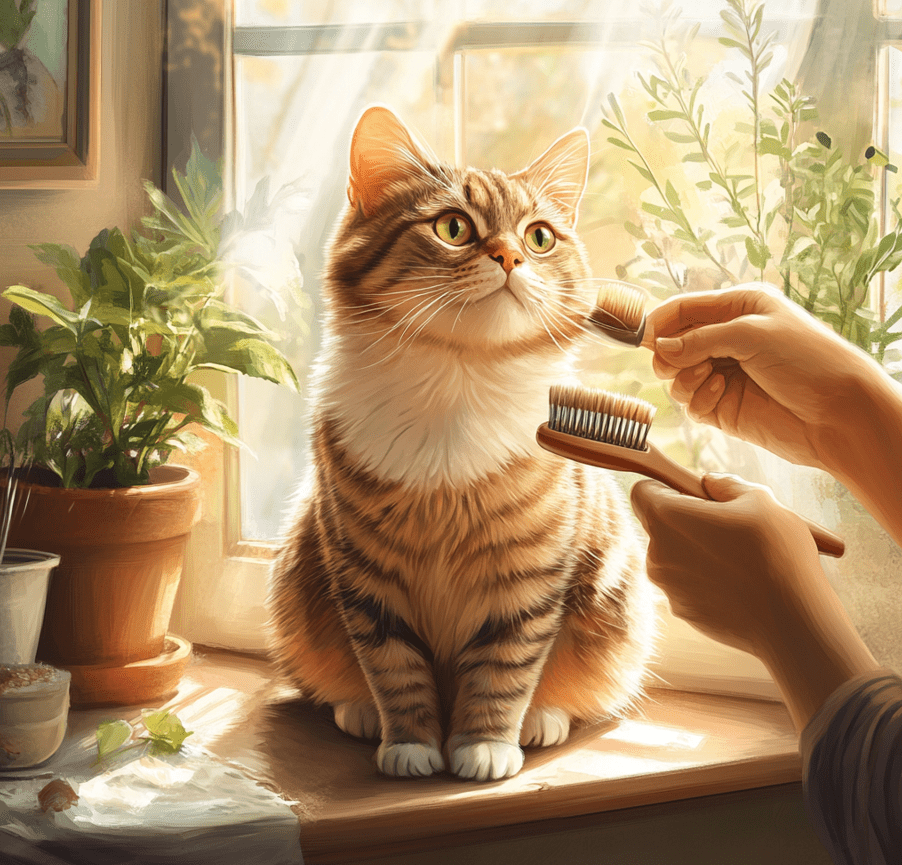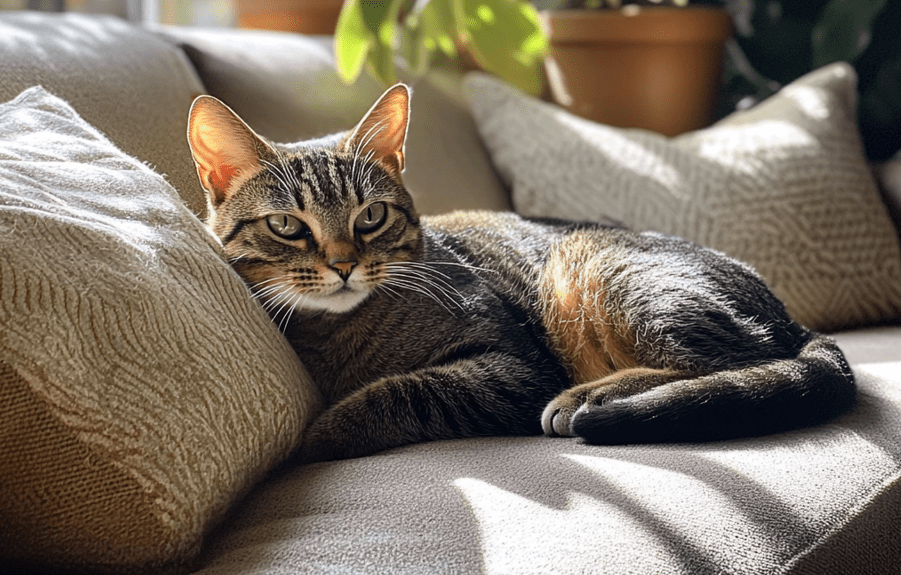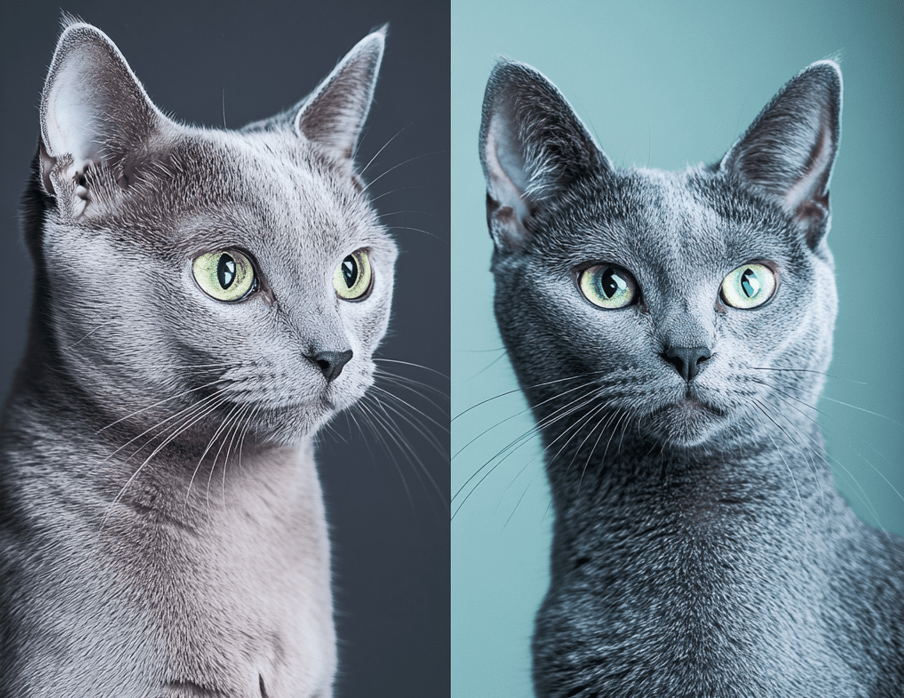
Domestic Shorthair cats, with their sleek coats and vibrant personalities, are beloved companions in countless households. However, these felines are prone to skin allergies that can cause discomfort and distress. As a cat owner, recognizing the signs of skin allergies in your Domestic Shorthair and understanding how to treat them is essential for their well-being. This comprehensive guide explores five common skin allergies affecting Domestic Shorthair cats, their causes, symptoms, and effective treatments. By diving deep into this topic, we aim to equip you with the knowledge to keep your cat’s skin healthy and irritation-free.
Understanding Skin Allergies in Domestic Shorthairs
Skin allergies in Domestic Shorthair cats occur when their immune system overreacts to certain substances, known as allergens. These allergens trigger inflammation, itching, and skin irritation, leading to discomfort. Domestic Shorthairs, despite their hardy nature, are not immune to these issues. Their short, dense coats can sometimes hide early signs of allergies, making vigilance key for cat owners.
Allergies in cats fall into several categories, including flea allergies, food sensitivities, environmental triggers, and contact irritants. Each type has unique causes and symptoms, but they often share common signs like excessive scratching, hair loss, and red or scabby skin. Left untreated, these conditions can lead to secondary infections or chronic discomfort. By identifying the specific allergy affecting your Domestic Shorthair, you can take targeted steps to alleviate their symptoms and improve their quality of life.
1.Flea Allergy Dermatitis: The Itchy Culprit
What Is Flea Allergy Dermatitis?
Flea allergy dermatitis (FAD) is one of the most common skin allergies in Domestic Shorthair cats. It occurs when a cat is hypersensitive to flea saliva. Even a single flea bite can trigger an intense allergic reaction, causing severe itching and skin irritation.
Symptoms
Excessive scratching, especially around the base of the tail, neck, and hindquarters
Hair loss from overgrooming
Red, inflamed skin or scabs
Hot spots (moist, painful patches of skin)
Visible fleas or flea dirt (small black specks resembling pepper)
Causes
Flea allergy dermatitis is caused by an immune response to proteins in flea saliva. Domestic Shorthairs with FAD are particularly sensitive, and even occasional flea exposure can lead to significant discomfort.
Treatment
Flea Control: Use veterinarian-recommended flea preventatives like topical treatments (e.g., Frontline, Revolution) or oral medications (e.g., Comfortis). Treat all pets in the household and wash bedding regularly.
Relieve Itching: Antihistamines or corticosteroids prescribed by a vet can reduce inflammation and itching.
Bathe Your Cat: Use a hypoallergenic or medicated shampoo to soothe irritated skin. Avoid over-bathing, which can dry out the skin.
Environmental Management: Vacuum your home frequently and use flea sprays or foggers to eliminate fleas from carpets and furniture.
Prevention
Regular flea prevention is critical. Monthly treatments, even during colder months, ensure your Domestic Shorthair stays flea-free. Check your cat’s coat regularly for signs of fleas, especially if they spend time outdoors.
2.Food Allergies: When Diet Causes Discomfort
What Are Food Allergies?
Food allergies in Domestic Shorthair cats occur when their immune system reacts to specific ingredients in their diet, such as proteins like chicken, beef, or fish. Unlike food intolerances, which cause digestive issues, food allergies primarily manifest as skin problems.

Symptoms
Itchy skin, particularly around the head, neck, and ears
Hair loss from scratching or licking
Red bumps or scabs
Ear infections or waxy buildup
Occasional vomiting or diarrhea (less common)
Causes
Common culprits include proteins (e.g., poultry, beef, dairy) or grains (e.g., wheat, corn). Some Domestic Shorthairs develop allergies to ingredients they’ve eaten for years, making diagnosis tricky.
Treatment
Elimination Diet: Work with your vet to switch your cat to a novel protein (e.g., duck, venison) or hydrolyzed diet for 8–12 weeks. Avoid treats or flavored medications during this period.
Symptom Relief: Antihistamines, steroids, or medicated shampoos can reduce itching while the allergen is identified.
Permanent Dietary Changes: Once the allergen is pinpointed, feed your Domestic Shorthair a diet free of the offending ingredient.
Prevention
Choose high-quality, limited-ingredient cat foods to minimize exposure to potential allergens. Monitor your cat for signs of itching after introducing new foods or treats.
3.Environmental Allergies (Atopy): Pollen, Dust, and More
What Are Environmental Allergies?
Also known as atopy, environmental allergies occur when Domestic Shorthair cats react to airborne allergens like pollen, dust mites, mold, or grass. These allergies are often seasonal but can persist year-round depending on the trigger.
Symptoms
Itchy paws (licking or chewing)
Facial rubbing or scratching
Red, watery eyes
Sneezing or coughing (less common)
Recurrent ear infections
Causes
Atopy is triggered by allergens inhaled or absorbed through the skin. Common culprits include:
1.Pollen from trees, grasses, or weeds
2.Dust mites in bedding or carpets
3.Mold spores in damp areas
4.Household chemicals or fragrances
Treatment
Allergen Avoidance: Reduce exposure by keeping windows closed during high pollen seasons, using air purifiers, and washing bedding frequently.
Medications: Antihistamines, corticosteroids, or cyclosporine can control symptoms. Immunotherapy (allergy shots) may be recommended for severe cases.
Topical Treatments: Medicated shampoos or sprays soothe irritated skin.
Omega-3 Supplements: Fatty acids can reduce inflammation and support skin health.
Prevention
Regular grooming removes allergens from your Domestic Shorthair’s coat. Use hypoallergenic bedding and avoid strong fragrances in cleaning products. Monitor pollen forecasts and limit outdoor time during peak seasons.
4.Contact Allergies: Sensitivity to Touch
What Are Contact Allergies?
Contact allergies are rare in Domestic Shorthair cats but occur when their skin reacts to direct contact with an irritant or allergen, such as certain fabrics, cleaning products, or plants.

Symptoms
Localized redness or rash where the allergen touched the skin
Itching or biting at the affected area
Hair loss in specific patches
Blisters or sores in severe cases
Causes
Common triggers include:
1.Flea collars or topical medications
2.Plastic food bowls
3.Detergents or carpet cleaners
4.Certain plants (e.g., poison ivy)
Treatment
Remove the Allergen: Identify and eliminate the offending substance. Switch to stainless steel or ceramic food bowls and use hypoallergenic detergents.
Cleanse the Skin: Rinse the affected area with water or a vet-recommended cleanser to remove residual irritants.
Medicate as Needed: Topical or oral steroids can reduce inflammation and itching.
Prevention
Test new products (e.g., shampoos, collars) on a small area of your cat’s skin before widespread use. Keep your Domestic Shorthair away from known irritants like toxic plants or harsh chemicals.
5.Miliary Dermatitis: A Symptom of Underlying Allergies
What Is Miliary Dermatitis?
Miliary dermatitis isn’t an allergy itself but a skin condition often caused by allergies in Domestic Shorthair cats. It appears as small, crusty bumps resembling millet seeds, typically along the back or neck.
Symptoms
Tiny scabs or bumps on the skin
Intense itching
Hair loss from grooming
Redness or sensitivity
Causes
Miliary dermatitis is commonly linked to flea allergies, food allergies, or atopy. Other causes include bacterial infections or parasites like mites.
Treatment
Address the Underlying Allergy: Treat the primary cause (e.g., fleas, food allergens) as outlined above.
Antibiotics or Antifungals: If a secondary infection is present, your vet may prescribe medications.
Soothing Baths: Medicated shampoos can reduce irritation and promote healing.
Prevention
Prevent miliary dermatitis by managing allergies proactively. Regular vet checkups and flea control are essential for Domestic Shorthairs prone to this condition.
Diagnosing Skin Allergies in Your Cat
Accurate diagnosis is critical for effective treatment. If your Domestic Shorthair shows signs of skin allergies, consult a veterinarian. They may perform:

Physical Exam: To assess skin lesions, hair loss, or infections.
Flea Comb Test: To check for fleas or flea dirt.
Skin Scrapings or Cytology: To rule out parasites or bacterial infections.
Food Trials: To identify food allergies.
Allergy Testing: Intradermal or blood tests for environmental allergens.
Keep a journal of your cat’s symptoms, including when they worsen, to help your vet pinpoint the cause.
General Treatment Strategies for Cat Skin Allergies
While specific treatments vary by allergy type, these general strategies benefit most Domestic Shorthairs:
Medicated Shampoos: Soothe itchy skin and remove allergens.
Antihistamines: Reduce itching without the side effects of steroids.
Corticosteroids: Provide quick relief for severe inflammation (use sparingly).
Omega-3 Fatty Acids: Support skin barrier function and reduce inflammation.
Hypoallergenic Environment: Use air purifiers, hypoallergenic bedding, and fragrance-free products.
Always follow your vet’s guidance, as overuse of medications like steroids can harm your cat.
Preventing Skin Allergies in Domestic Shorthairs
Prevention is easier than treatment. Try these tips:
Regular Flea Control: Use vet-approved products year-round.
High-Quality Diet: Feed a balanced, limited-ingredient diet to avoid food sensitivities.
Grooming Routine: Brush your Domestic Shorthair weekly to remove allergens and check for skin issues.
Clean Environment: Vacuum regularly, wash bedding, and avoid harsh chemicals.
Monitor Symptoms: Catch early signs of itching or hair loss to prevent worsening.
When to See a Veterinarian
Contact your vet if your Domestic Shorthair:
1.Scratches excessively or develops bald patches
2.Has open sores, scabs, or hot spots
3.Shows behavioral changes (e.g., lethargy, irritability)
4.Experiences recurrent ear infections or skin issues
Conclusion: Keeping Your Domestic Shorthair Comfortable

Skin allergies in Domestic Shorthair cats can be challenging, but with the right knowledge and care, you can help your feline friend live comfortably. By understanding the causes of flea allergies, food sensitivities, environmental triggers, contact irritants, and miliary dermatitis, you’re better equipped to spot symptoms early. Work closely with your veterinarian to diagnose and treat allergies, using a combination of medications, dietary changes, and environmental management. With proactive prevention and attentive care, your Domestic Shorthair can enjoy a healthy, itch-free life full of purrs and playtime.




